
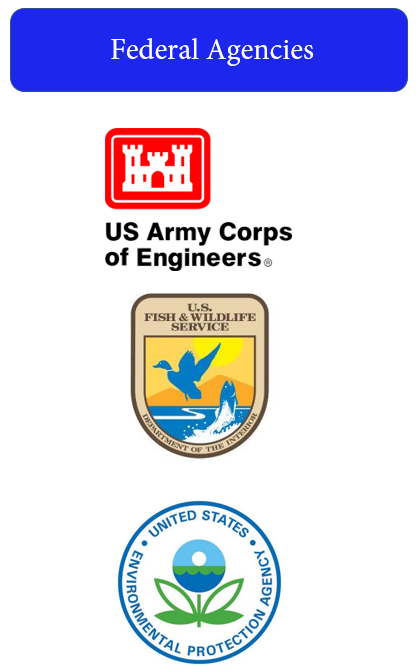 Who is involved?
Who is involved?A number of Federal and State agencies will participate in the review and permitting of a Gorham Connector.
Because this Project will not use Federal funding, but will require a Federal Clean Water Act permit, the USACE (U.S. Army Corps of Engineers) is the lead Federal regulatory agency. The USACE will thoroughly evaluate project alternatives by applying the Clean Water Action Section 404(b)(1) Guidelines established by the U.S, Environmental Protection Agency (USEPA). The 404(b)(1) Guidelines establish the environmental criteria used in evaluating activities regulated under Section 404 of the Clean Water Act, in order to balance project benefits against environmental effects. The USACE will evaluate the Project's potential effects on wetlands and waters of the United States. With the assistance of other federal and State resource agencies, the USACE will also evaluate the potential for project effects on a range of other natural and cultural resources, and ways to minimize and mitigate these.
The United States Fish and Wildlife Service (USFWS) works alongside "others to conserve, protect, and enhance fish, wildlife, plants and their habitats for the continuing benefit of the American people." The USFWS will assist the USACE with its evaluation of whether the Gorham Connector will affect Federally threatened or endangered species, and other wildlife that may be protected under Federal law. The United States Environmental Protection Agency (USEPA) works to "protect human health and the environment," and in consultation with USACE, USFWS, and State agency partners, will evaluate how the Gorham Connector could potentially affect a broad range of natural resources and environmental quality parameters.
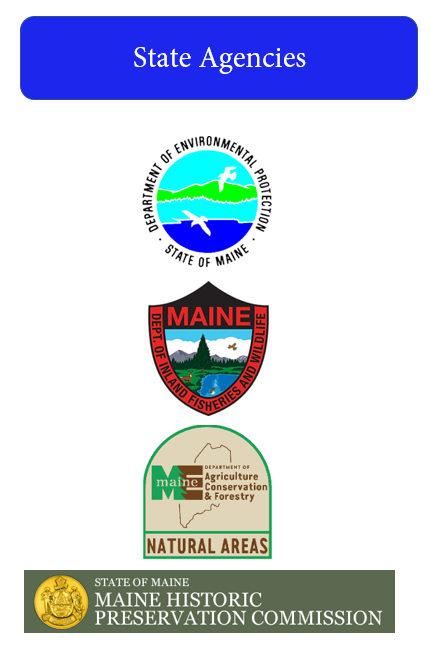 State Agencies
State AgenciesThe Gorham Connector will also require a permit under the State of Maine NRPA. The Maine Department of Environmental Protection (Maine DEP) "is responsible for protecting and restoring Maine's natural resources and enforcing the state's environmental laws", and will lead the State’s review of the Project under NRPA. Maine DEP’s review of the Project under NRPA will include wetlands, waterbodies and watercourses, and significant wildlife habitats. Maine DEP will also review the Project’s stormwater management plan.
Maine DEP will complete its review in consultation with other State agencies with specific areas of natural and cultural resource expertise. The Maine Department of Inland Fisheries and Wildlife (MDIFW) "preserves, protects, and enhances the inland fisheries and wildlife resources of the state", and in cooperation with Maine DEP will evaluate the Gorham Connector for potential effects on state-listed rare, threatened, or endangered species, important habitats, and wildlife or fisheries of special management concern. Maine Natural Areas Program (MNAP) is part of the Maine Department of Agriculture, Conservation and Forestry. MNAP "facilitates conservation of Maine's biodiversity by providing comprehensive information and scientific expertise on at-risk species, natural ecosystems, wildlife habitats, ecological reserves, and invasive plants to landowners, developers, resource managers, towns, and other conservation partners." MNAP will provide Maine DEP with technical recommendations if there are botanical features of interest in the Project area.
The Maine Historic Preservation Commission (MHPC) is responsible for preserving "the architectural, historic, and environmental heritage of the people of the State, and to develop and promote the cultural, educational, and economic benefits of these resources." MHPC will support the USACE’s evaluation of whether the Project has the potential to affect cultural or historic resources that are eligible for listing on the National Register of Historic Places, and for compliance under Section 106 of the Federal National Historic Preservation Act.
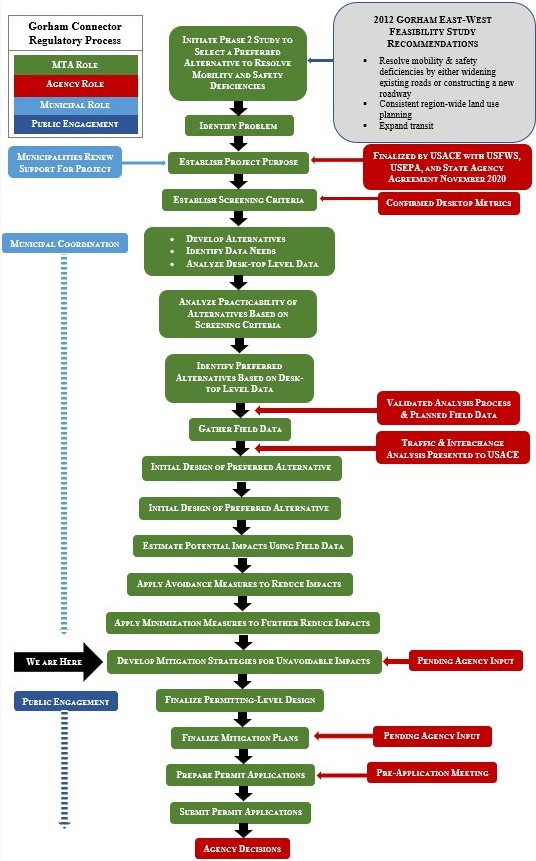
There are 9 major steps:
Each of these steps has multiple components and consistent agency coordination. Maine Turnpike Authority is following these regulatory requirements and coordinating with State and Federal agency reviewers throughout the process.
The USACE drafted a project purpose statement for the Gorham Connector in 2014 and ultimately finalized with concurrence from USFWS, USEPA, and State agency partners during a November 2020 Gorham Connector interagency meeting as:
"To address demonstrated transportation safety and mobility deficiencies within the Gorham - Portland corridor by implementing improvements that maximize public safety, the sustainable mobility of people and goods, and minimize adverse community and environmental impacts."
As the flow diagram to the right signifies, the purpose is identified following the characterization of the problem to be solved. At this time the involved municipalities (Gorham, Scarborough, South Portland, and Westbrook) reaffirmed their commitment to the project. The project purpose is a prerequisite to determining the study area and the scope of the alternatives analysis. In collaboration with other agency partners, the USACE defined the project purpose broadly to ensure that a reasonable range of alternatives are examined.
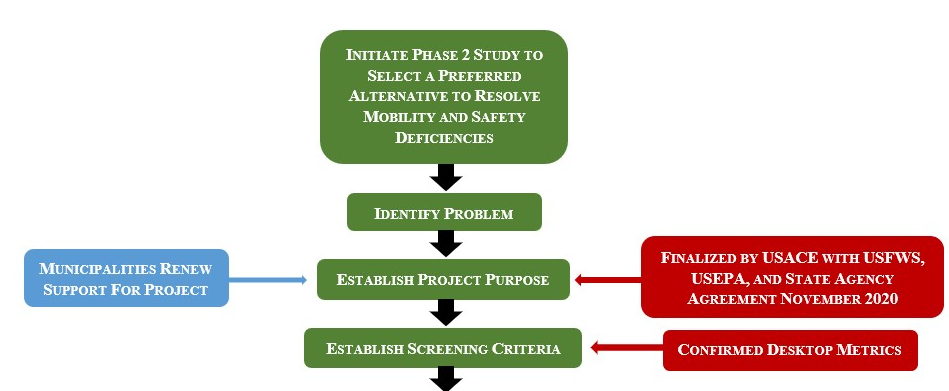
The alternatives analysis process begins with establishing a range of available alternatives that are reasonable and feasible for implementation. Phase I of the alternatives analysis process includes a map-based screening of potential project route alternatives and project area constraints, coupled with a ‘practicability’ test. Wetlands, waterbodies, and other natural and cultural resources available through public datasets are included in the constraints map evaluation. Those alternatives deemed not practicable or having avoidable environmental impacts are eliminated from further consideration, while the remaining ‘practicable’ alternatives are carried forward to Phase II of the alternatives analysis. Phase II of the alternatives analysis may incorporate additional data collected by on-site field investigation, and includes a detailed review of the remaining alternatives. Phase II of the alternatives analysis concludes with confirmation of the Least Environmentally Damaging Practicable Alternative (LEDPA) for meeting the project purpose.
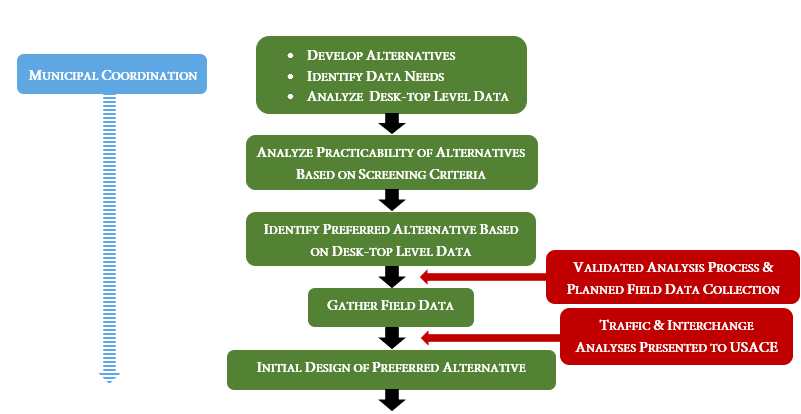
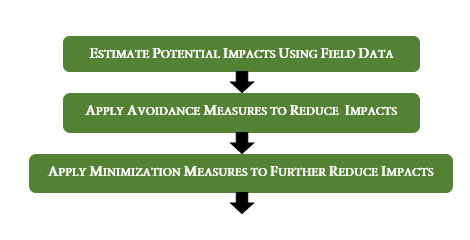 Avoidance and Minimization
Avoidance and MinimizationMeasures to avoid and minimize impacts are taken throughout the design and regulatory process. The avoidance step considers project siting alternatives, and such measures are typically part of Phase I of the alternatives analysis process and evaluation of the initial alternative alignments. Minimization steps address modifications to the design of the LEDPA confirmed by Phase II of the alternatives analysis process, generally at specific locations along the preferred alignment with the intent to reduce resource impacts where practicable.
Unavoidable impacts to wetlands and waterbodies may require compensatory mitigation to restore lost functions and values. Planning for such mitigation often begins soon after the LEDPA is confirmed, particularly if off-site mitigation is being considered. However, it is not until later phases of project review that USACE, Maine DEP, the project applicant, and other involved parties finalize mitigation plans. Affected natural resources, functions and values, watershed location, site availability, the type of mitigation (restoration, creation, preservation, enhancement, or fee-based compensation), and other factors are all considered in developing a robust and multi-faceted mitigation plan.
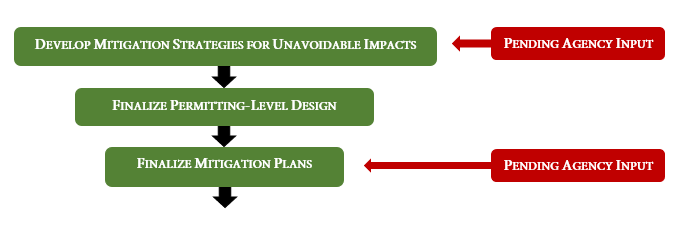
The submission of a permit application by Maine Turnpike Authority to Maine DEP and the USACE will follow completion of the evaluation of project alternatives, project design, mitigation plan, and a public outreach process. At this time the Maine Turnpike Authority has not established a specific date for the submission of a permit application.
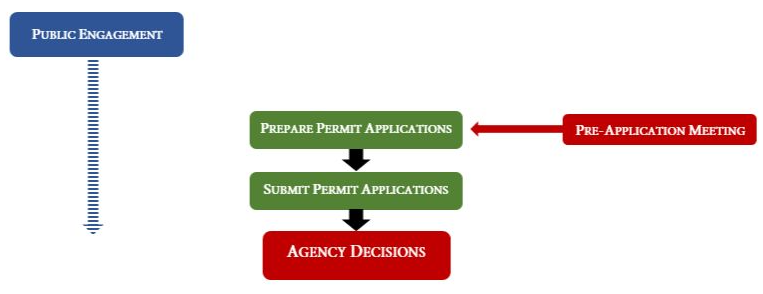
Thank you for taking the time to review the project materials. Please click the button below to leave a comment or ask a question.
If you want to stay informed on the project, please click the button below to sign-up for our email list.
Explore the links below to learn more about the Gorham Connector.
